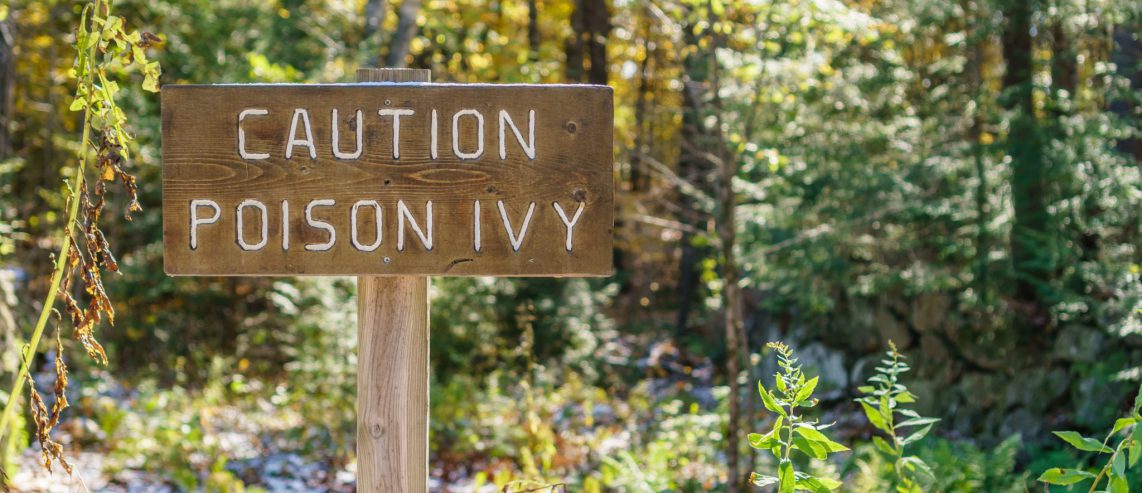If you spend any time hiking, camping, or gardening in warm weather, chances are you’ll come across poison ivy. And if the plant touches your skin, you’re likely to develop an itchy rash.
Here’s what you need to know about treating — and preventing — a poison ivy rash.
What Is Poison Ivy?
Poison ivy is a vinelike weed found in every U.S. state except Alaska and Hawaii. Its leaves grow in characteristic clusters of three.
Poison ivy produces an oil called urushiol. This oil produces an allergic rash in most adults and children.
Other plants that produce urushiol are poison oak and poison sumac. Poison oak is a shrub that grows mostly in the western states. Poison sumac is a shrub that grows mostly in the Mississippi River area.
The oil from all three plants produces a similar rash.
Never Miss a Beat!
Subscribe to Our HealthBeat Newsletter!
Thank you for subscribing!
You can now select the specific newsletters you'd like to receive.
You are already subscribed.
Subscribe to more newsletters in our email preference center.
Sorry, an error occurred. Please try again later.
Get Healthy Tips Sent to Your Phone!
How Do You Get Poison Ivy?
You get a poison ivy rash (contact dermatitis) when the oil from the plant gets on your skin. That happens if you come into contact with:
- A patch of poison ivy.
- Clothing or other objects that have the poison ivy oil on them.
- Pets whose fur has poison ivy oil on it. (Note: Animals are not allergic to poison ivy, so they won’t show symptoms like scratching to clue you in to any exposure.)
Poison ivy isn’t contagious. You can’t get it from touching another person’s rash. But you can get it from touching anything that still has the poison ivy oil on it, like unwashed clothing.
Children don’t always wash well, and traces of the oil can remain under their fingernails. If that happens, they can then spread the oil by touching someone else.
Symptoms of a Poison Ivy Rash
A poison ivy rash may not appear right away. If you’ve never encountered poison ivy before, it may take two to three weeks after exposure before the rash appears.
If you’ve had poison ivy before, the rash may develop in a few hours.
No matter when the rash appears, most people experience the following progression of symptoms.
- Your skin itches intensely before the rash appears.
- A red rash appears shortly after the itching begins.
- The rash may develop blisters, which eventually crust over.
- The rash will clear by itself in a week or two, even without treatment. But you can take steps to relieve the itching and discomfort while it’s healing.
How to Treat Poison Ivy
There are several home remedies for poison ivy.
Sometimes you can prevent or reduce a rash if you act quickly after exposure. Try:
- Washing with soap and water for at least 10 minutes. Don’t scrub hard, as you may rub the plant’s oil further into your skin.
- Washing under your fingernails to remove any oil trapped there.
- Laundering any clothing that may have touched the poison ivy.
- Bathing your pet if they touched the poison ivy. Wear rubber gloves to avoid getting oil on yourself.
- Wash any items that might have touched the poison ivy — gardening tools, golf clubs, sporting equipment, your dog’s leash. Again, rubber gloves are a must.
Try the following to alleviate symptoms if a rash appears.
- Leave blisters alone. They protect the wound beneath and guard against infection.
- Take an antihistamine pill to help reduce itching. (Don’t apply topical antihistamine, which can worsen the rash and itching.)
- Take lukewarm baths. You can try adding colloidal oatmeal (available at drug stores) to ease the itch. Or add a cup of baking soda to running bathwater for a similar effect.
- Take cool showers, which can calm the itching.
- Try calamine lotion or hydrocortisone cream to relieve itching.
- Try not to scratch. You could cause an infection if the skin opens up.
- Use cold compresses to soothe itchy skin. Just wet a clean washcloth with cold water and wring it out before applying to skin.
When Should I Call the Doctor for Poison Ivy?
If you’re not sure that poison ivy caused your rash, you should see your doctor. Your doctor can verify that it’s poison ivy, and not some other kind of rash.
Likewise, if your child has a rash and you’re not sure it’s poison ivy, you should take them to the pediatrician. Some childhood illnesses produce rashes that look like poison ivy.
You should also see your primary care doctor or a dermatologist if your rash isn’t improving in seven to 10 days.
If you have any of the following symptoms of a severe poison ivy allergy, you should go to the emergency room right away:
- A fever over 100 degrees along with the rash.
- A rash around your eyes or mouth.
- A rash around your genitals.
- A rash that covers most of your body.
- Itching so bad you can’t sleep.
- Swelling on your face, especially around your eyes.
- Trouble breathing or swallowing.
Preventing Poison Ivy
The best way to deal with poison ivy is to avoid it. Teach children what the plant looks like, and not to go near it. Here are some other ways to prevent poison ivy rash.
- Clean all garden tools and other equipment with warm, soapy water. If water isn’t available, wipe them down with rubbing alcohol.
- If you’re working with plants, wear long sleeves, pants, socks, boots, and leather or vinyl gloves.
- Never burn poison ivy. The toxins get in the air and can cause a serious reaction if someone breathes them in.
- Never mow or use a weed trimmer on poison ivy. In cutting it up, you send thousands of pieces into the air. You risk getting a rash all over your body if the tiny pieces land on you.
- Take a shower as soon as you come inside. Be sure to wash under your fingernails.
- Wash all clothing after you’ve been outside.
- Wear a poison ivy barrier cream or lotion. There are several over-the-counter skin protectants available for people who spend a lot of time outdoors. They form a coating on the skin to protect it from plant oils.
Sources
American Academy of Dermatology, Poison Ivy, Oak, and Sumac: How to Treat the Rash, Link
Kidshealth.org, First Aid: Poison Ivy/Oak/Sumac, Link
American Academy of Family Physicians, Poison Ivy, Link
American Academy of Pediatrics, Poison Ivy Treatment, Link
National Library of Medicine, Bentoquatam Topical, Link
About UPMC
Headquartered in Pittsburgh, UPMC is a world-renowned health care provider and insurer. We operate 40 hospitals and 800 doctors’ offices and outpatient centers, with locations throughout Pennsylvania, Maryland, New York, West Virginia, and internationally. We employ 4,900 physicians, and we are leaders in clinical care, groundbreaking research, and treatment breakthroughs. U.S. News & World Report consistently ranks UPMC Presbyterian Shadyside as one of the nation’s best hospitals in many specialties and ranks UPMC Children’s Hospital of Pittsburgh on its Honor Roll of America’s Best Children’s Hospitals. We are dedicated to providing Life Changing Medicine to our communities.

